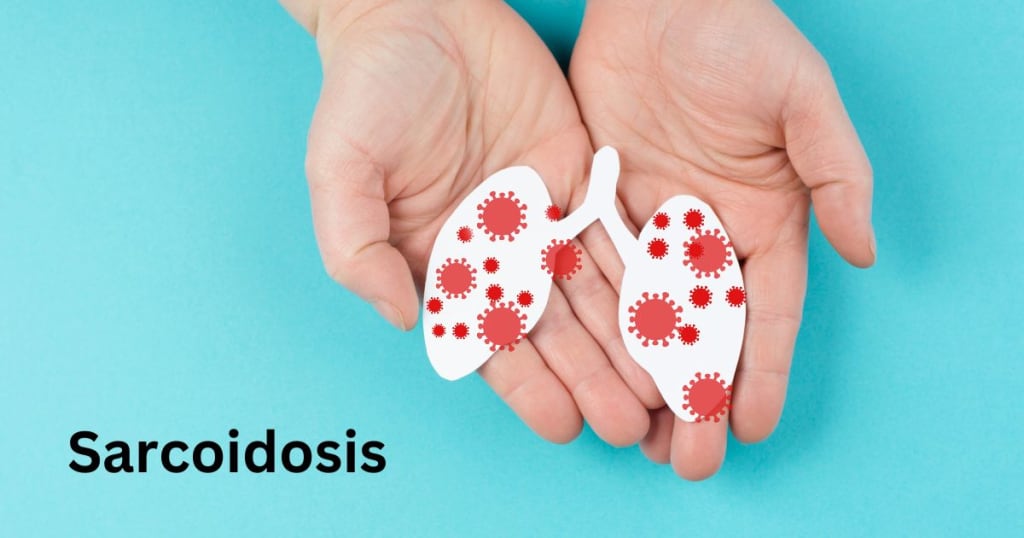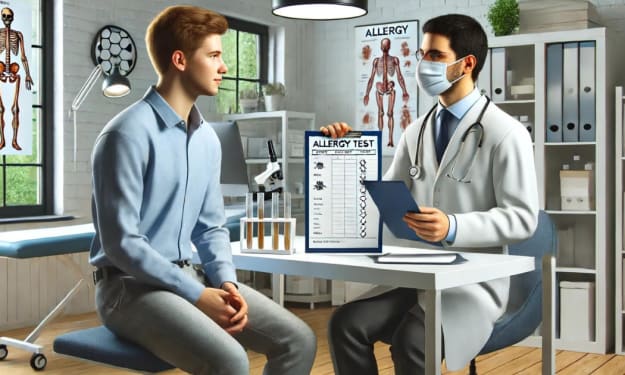A Comprehensive Guide to Sarcoidosis: Symptoms, Diagnosis, and Treatment
Sarcoidosis

Sarcoidosis disease is a complex inflammatory condition that can affect multiple organs in the body, most commonly the lungs and lymph glands. Despite being relatively rare, understanding this disease is crucial for early diagnosis and effective treatment.
This blog will delve into the symptoms, treatment options, and various aspects of sarcoidosis disease to help you better comprehend its impact and management.
What is Sarcoidosis?
Sarcoidosis disease is characterized by the growth of tiny collections of inflammatory cells known as sarcoidosis granulomas. These granulomas can develop in any part of the body, leading to the affected organs not functioning properly.
The exact cause of sarcoidosis is unknown, but it is believed to be related to an abnormal immune response. Environmental factors, genetics, and possible infections might trigger the disease, although no specific cause has been identified.
Symptoms of Sarcoidosis
The symptoms of sarcoidosis disease can vary widely depending on which organs are affected:
General Symptoms: Fatigue, fever, swollen lymph nodes, and weight loss are common. These symptoms are often non-specific and can be mistaken for other conditions.
Lungs: Persistent dry cough, shortness of breath, and chest pain are indicative of sarcoidosis of the lung or pulmonary sarcoidosis. These symptoms can lead to decreased lung function and may resemble other respiratory diseases like asthma or chronic obstructive pulmonary disease (COPD).
Skin: Rashes, sores, and bumps on the skin, often appearing as raised, red, and sometimes painful nodules, particularly on the shins or other parts of the body.
Eyes: Blurred vision, eye pain, severe redness, and sensitivity to light. In severe cases, untreated eye involvement can lead to vision loss.
Other Organs: Arthritis, arrhythmias, liver and spleen enlargement, and neurological issues. Involvement of organs such as the heart can be serious, leading to complications like heart failure or arrhythmias.
Pulmonary Sarcoidosis
Pulmonary sarcoidosis specifically affects the lungs and is the most common form of the disease. It involves the formation of granulomas in the lung tissues, which can lead to symptoms like a persistent dry cough, shortness of breath, and chest pain.
Diagnosing pulmonary sarcoidosis often involves imaging tests like chest X-rays and CT scans to identify granulomas and assess lung function. Pulmonary function tests may also be used to measure the impact of the disease on breathing and overall lung capacity.
Sarcoidosis Diagnosis
Diagnosing sarcoidosis disease requires a combination of medical history, physical examinations, and diagnostic tests:
Physical Exams: Initial assessments to check for enlarged lymph nodes, skin lesions, or other signs of sarcoidosis. A thorough examination can reveal signs that might be subtle or overlooked.
Imaging Tests: Chest X-rays and CT scans to detect granulomas in the lungs and other organs. These imaging techniques are crucial for visualizing the extent of organ involvement and guiding further testing.
Biopsies: Tissue samples from affected areas to confirm the presence of granulomas. Biopsies are often obtained from accessible sites such as the skin or lymph nodes, but in some cases, a lung biopsy may be necessary.
Blood Tests: To check for elevated levels of calcium or angiotensin-converting enzyme (ACE), which can indicate sarcoidosis. Blood tests can also help rule out other conditions with similar symptoms.
Differentiating sarcoidosis from other diseases, such as tuberculosis, is essential. Sarcoidosis vs. tuberculosis often involves comparing symptoms and test results, as tuberculosis is caused by a bacterial infection, whereas sarcoidosis is an inflammatory disease without an infectious agent.
Sarcoidosis Treatment
There is no cure for sarcoidosis disease, but various treatments can help manage symptoms and improve quality of life:
Corticosteroids: These are the most common treatments to reduce inflammation. Prednisone is frequently prescribed to control acute symptoms.
Immunosuppressants: Medications like methotrexate, azathioprine, or hydroxychloroquine can help control the immune system’s overactivity, especially in patients who cannot tolerate corticosteroids or require long-term therapy.
Symptom Management: Pain relievers and medications to manage specific symptoms like skin rashes or eye inflammation. Antihistamines or topical treatments may be used for skin involvement.
Lifestyle Adjustments: Regular exercise, a healthy diet, and avoiding smoking can help manage the disease. Maintaining a healthy lifestyle can improve overall well-being and reduce the risk of complications.
Sarcoidosis Medication
Sarcoidosis medication primarily includes corticosteroids and immunosuppressants. These medications help to reduce inflammation and suppress the immune system. It is crucial for patients to follow their prescribed treatment plans and monitor for side effects, which can include weight gain, high blood pressure, and an increased risk of infections.
Patients should regularly consult with their healthcare provider to adjust medication dosages and manage any adverse effects.
Living with Sarcoidosis
Living with sarcoidosis disease can be challenging due to its chronic nature and potential for flare-ups. Patients are encouraged to:
Follow a Treatment Plan: Adherence to prescribed medications and regular check-ups is essential. Consistent follow-up with healthcare providers ensures that the disease is monitored and managed effectively.
Monitor Health: Keeping track of symptoms and reporting any changes to a healthcare provider. Early detection of new symptoms or complications can lead to timely adjustments in treatment.
Seek Support: Joining support groups or seeking counseling can help manage the emotional aspects of the disease. Support from others who understand the condition can provide comfort and practical advice.
Sarcoidosis vs. Tuberculosis
Understanding the differences between sarcoidosis vs. tuberculosis is vital for accurate diagnosis and treatment. While both diseases can cause lung-related symptoms, tuberculosis is caused by a bacterial infection and is contagious, whereas sarcoidosis is an inflammatory condition without an infectious agent.
Proper diagnostic tests, including bacterial cultures and tissue biopsies, are used to distinguish between the two. Tuberculosis treatment involves antibiotics, whereas sarcoidosis treatment focuses on managing inflammation.
Conclusion
Sarcoidosis disease is a complex condition that requires careful management and awareness. By understanding the symptoms, treatment options, and differences from other diseases like tuberculosis, patients can better navigate their health journey. If you suspect you may have sarcoidosis disease, consult a healthcare professional for an accurate diagnosis and appropriate treatment plan.
About the Creator
swasaclinics
Swasa Clinics offers expert care for allergy, asthma, COPD, tuberculosis, sleep disorders, sinusitis, adenoids, tonsils and snoring. Trust our specialists for comprehensive respiratory and sleep health solutions.
Enjoyed the story? Support the Creator.
Subscribe for free to receive all their stories in your feed. You could also pledge your support or give them a one-off tip, letting them know you appreciate their work.





Comments
There are no comments for this story
Be the first to respond and start the conversation.